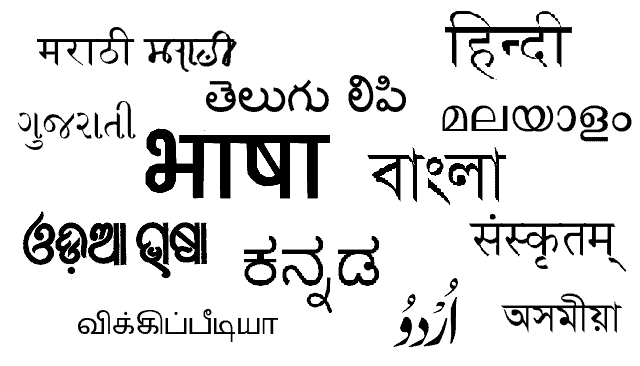What makes India India, is its composite nature, its many cultures and languages which is why imposing one single language on all the people is problematic, at the same time the alternative is continuing with a language that was once imposed on us (quite ironically, the language used in this article as well).
Nationalism.
In the current political context, this is a word we don’t feel shy throwing around. We may add a suffix such as ‘hyper’ or ‘anti’ at times but the root word remains. But what really does the word indicate?
Unlike what many believe, nationalism is not simply the love for one’s country, it is the contempt for all others, it is the belief that one’s nation is superior to all other nations. Nationalism also appeals to the identity of the person, a sense of belonging or one force that binds everyone together to the nation.
When Indian nationalism developed during the freedom struggle, it was based on the territory of India that constituted the entire population despite their diverse backgrounds. It was anti-colonial nationalism aimed to create a sense of patriotism with the purpose of attaining self-governance.
After attaining Independence, it was the need to rid ourselves of colonial elements that Hindi was proposed to be the language of administration and governance. Due to protests in the southern states, a compromise was made that there will be a fifteen-year period to transition from English to Hindi but as temporary provisions go in India, this transition was never made.
After seventy-three years, the language debate still continues. This year, for instance, the National Education Policy draft recommended mandatory Hindi classes in all schools, even in non-Hindi speaking areas. This clause was met by protests in the south and was thus removed but it nonetheless proves that ‘nationalists’ of this country have not given up on the hope of having one language that would unify all the people of the nation.
While this idea seems promising and also gives us a sense of letting go of our colonised past, the need to implement Hindi as the common language of the country is not driven by anti-colonial nationalism as much as it is by cultural nationalism. Cultural nationalism is a form of nationalism in which the nation is defined by a shared culture, it focuses on the identity of a nation and its people shared by common language and traditions.
Those rooting for the imposition of Hindi are not rooting against English or the west, in fact, a lot of them can be seen celebrating Donald Trump’s birthday in Delhi, but it is their need to create a homogenous cultural identity that makes them make such demands. This imposition is especially felt by those from South and North East India, students coming from these states to Delhi for higher education are faced by casual comments like ‘this is why they need to teach Hindi everywhere’ when they can not comprehend the language.
At the same time, what is the alternative?
English was also an imposed language, Lord Macaulay in 1835 decided for us that English should be the language of education, instead of other ‘Oriental’ languages. It is the language of the colonisers and even when English is said to have been appropriated by Indians as is evident in postcolonial literature, the truth still stands that as long as we continue to give English the importance that we do, we diminish the importance of our own culture and languages.
Then, of course, there is the three-language formula, one that says that each state should teach English, Hindi and any other non-Hindi language. The issue with this is that while almost all students receiving formal education in India learn Hindi up to a certain grade, those living in the Hindi belt do not reciprocate the same respect to other regional languages. You will not find many students in Delhi learning Tamil or Manipuri in their schools, instead, their school would offer German or French (thus furthering the ‘west is best’ idea).
Both Hindi and English are languages that one cannot sustain without while living in India, and it is these languages that show up, front and centre while engaging in the language debate, but in the midst of it all, it is our regional languages that suffer the brunt of English and Hindi tyranny.
Featured Image Credits- Deccan Herald
Gauri Ramachandran




Comments are closed.